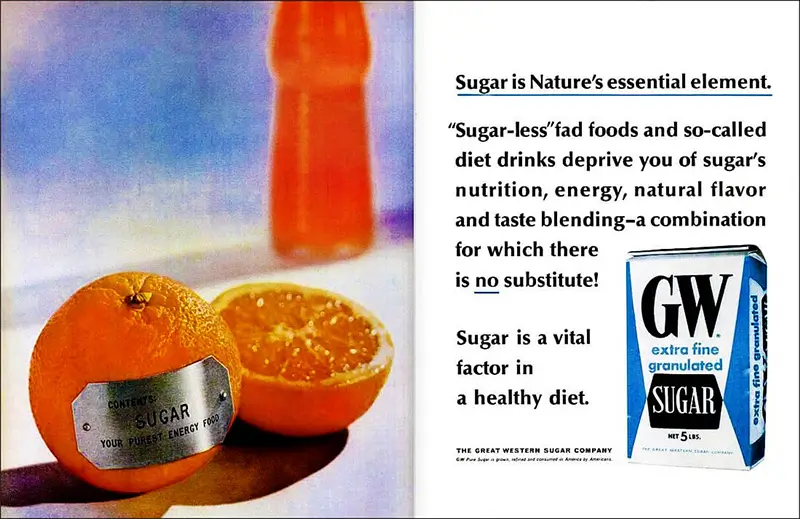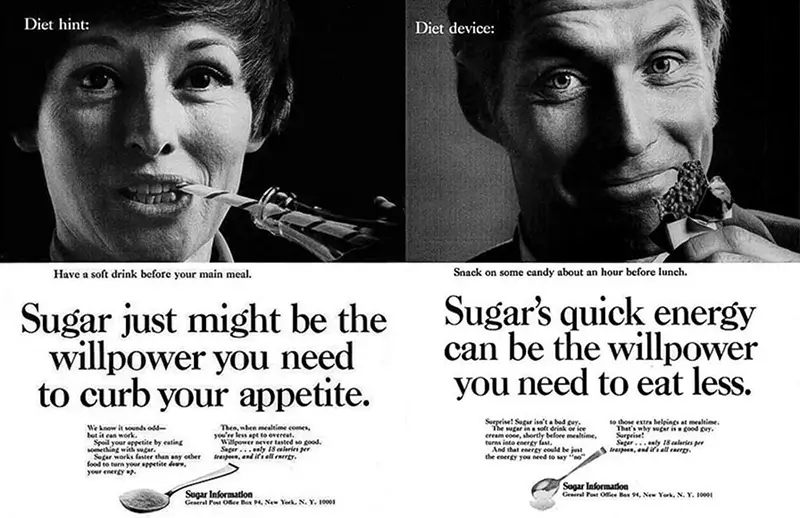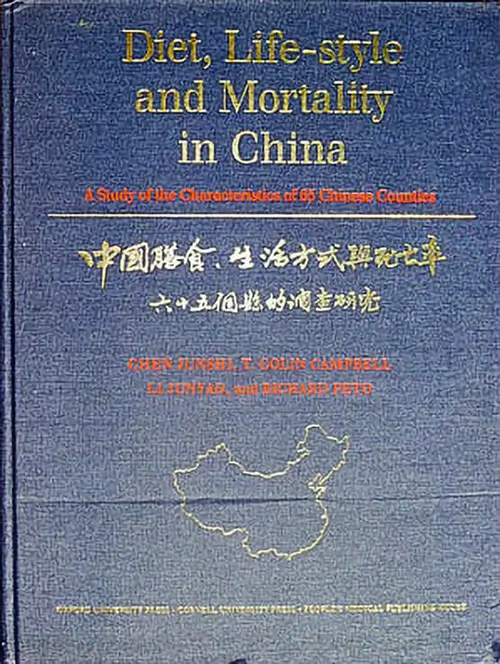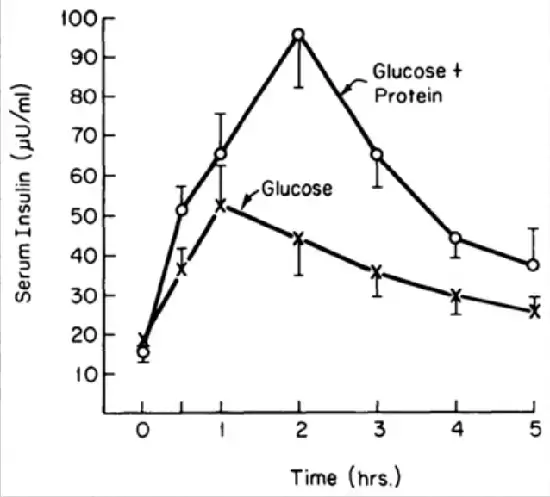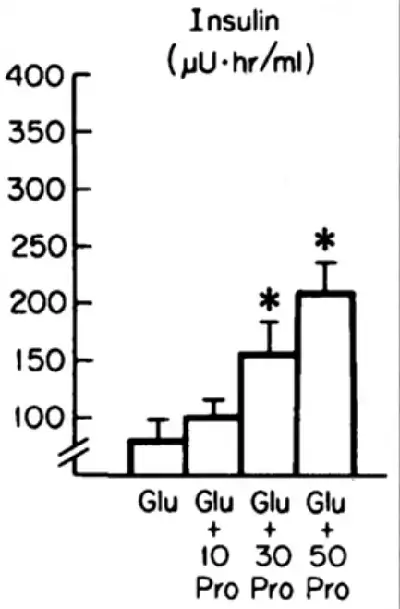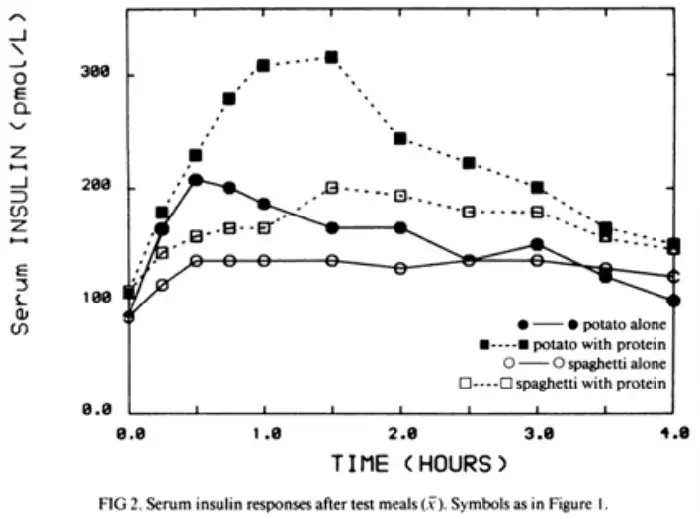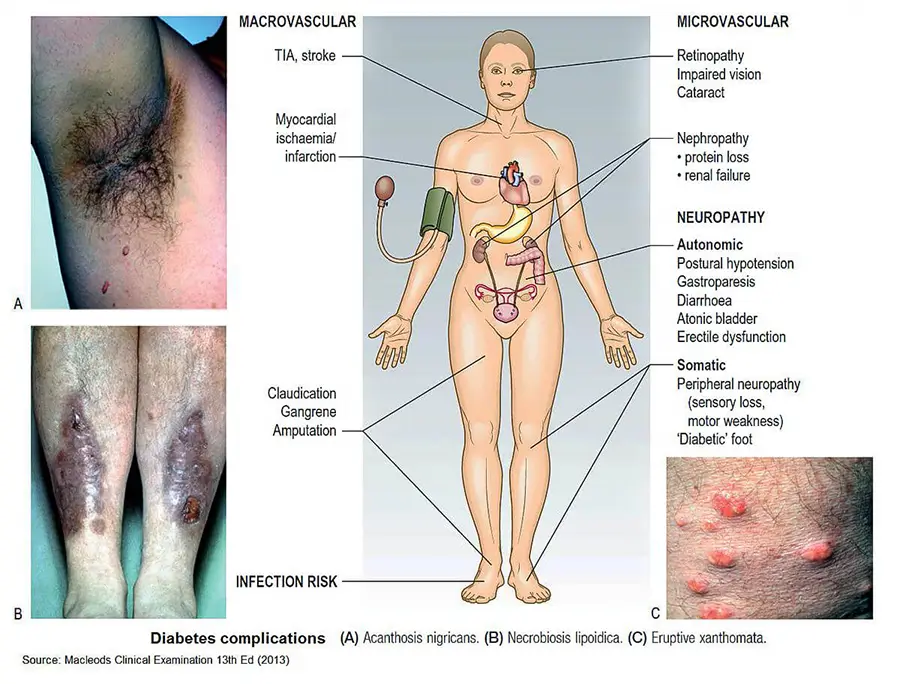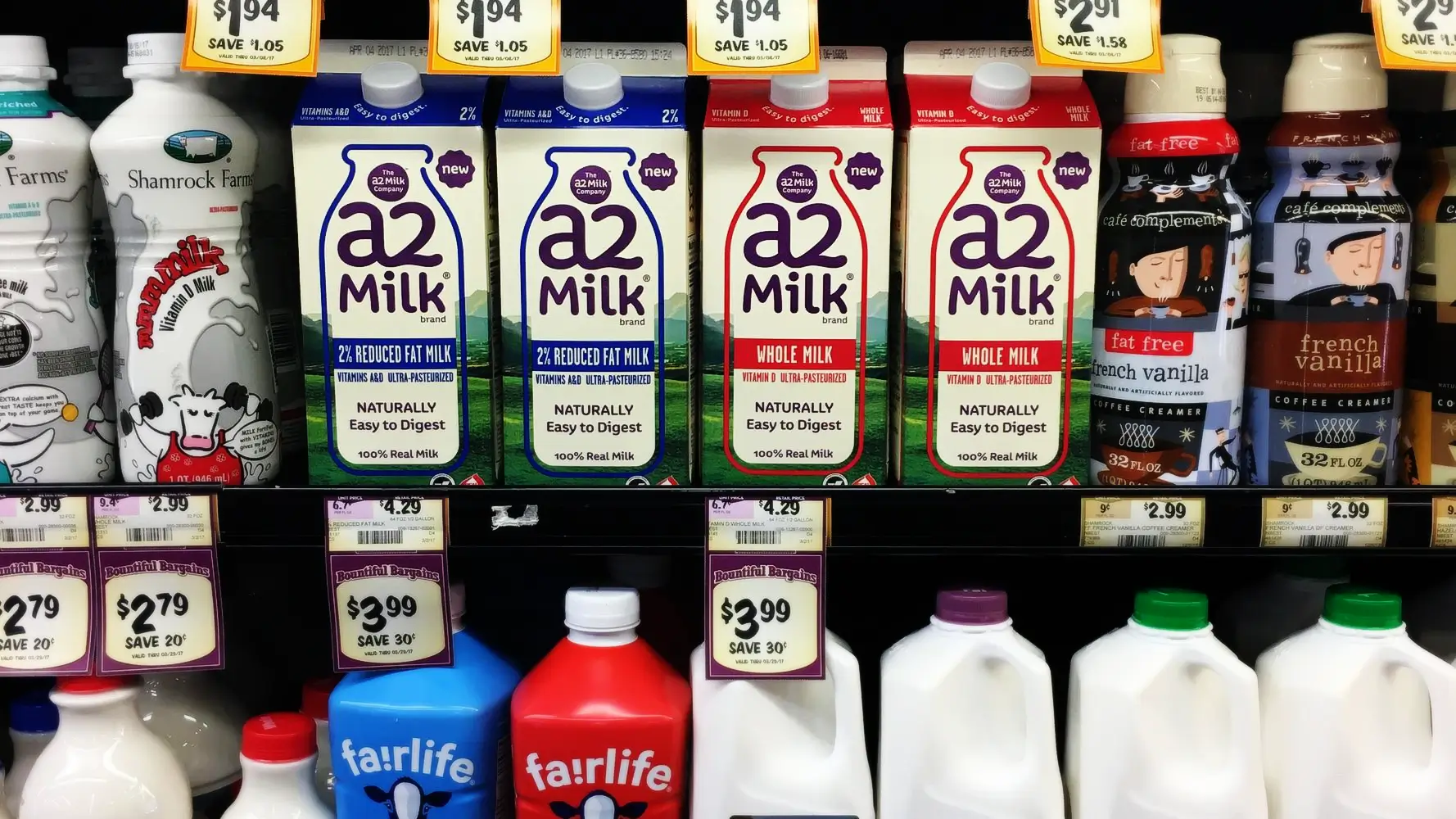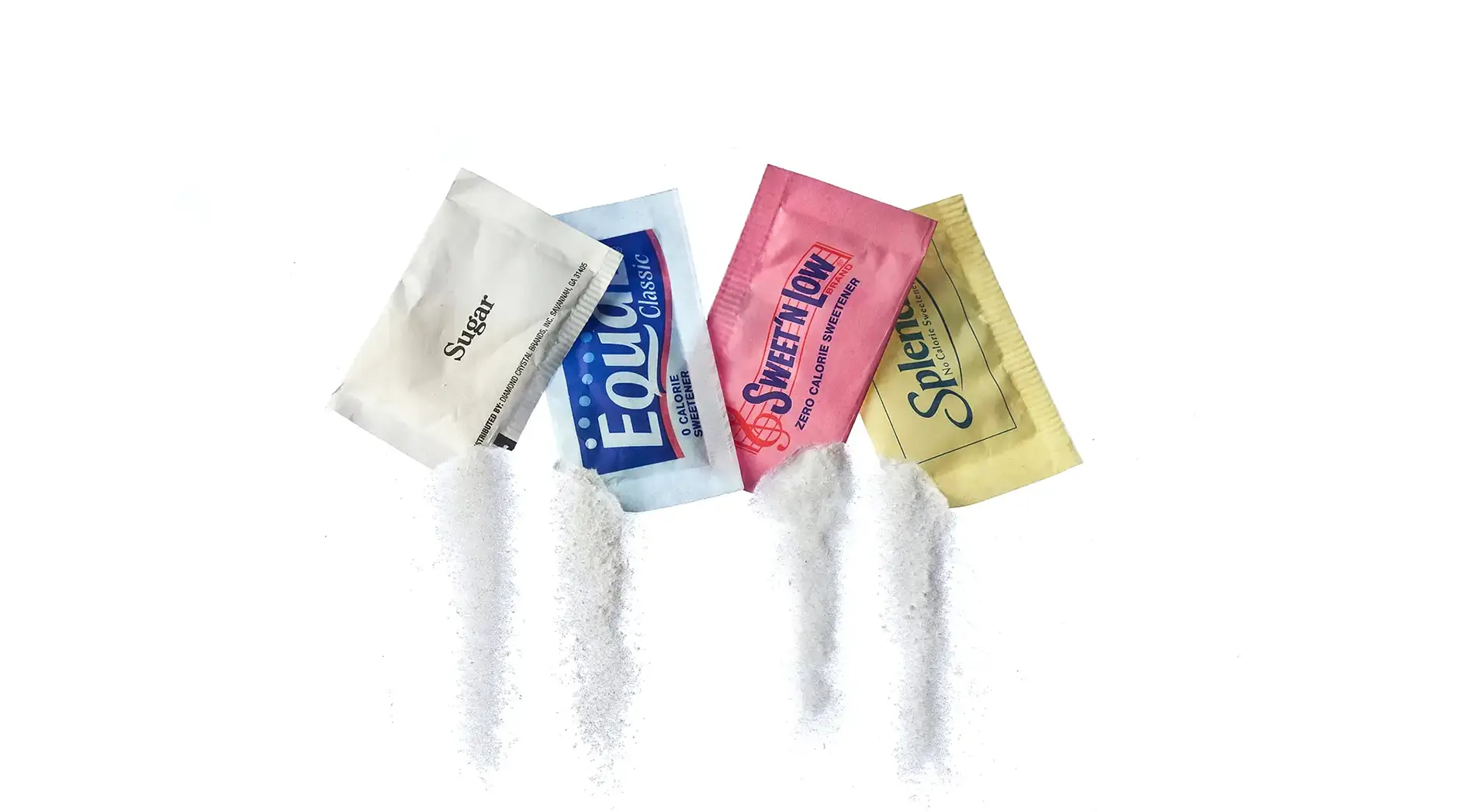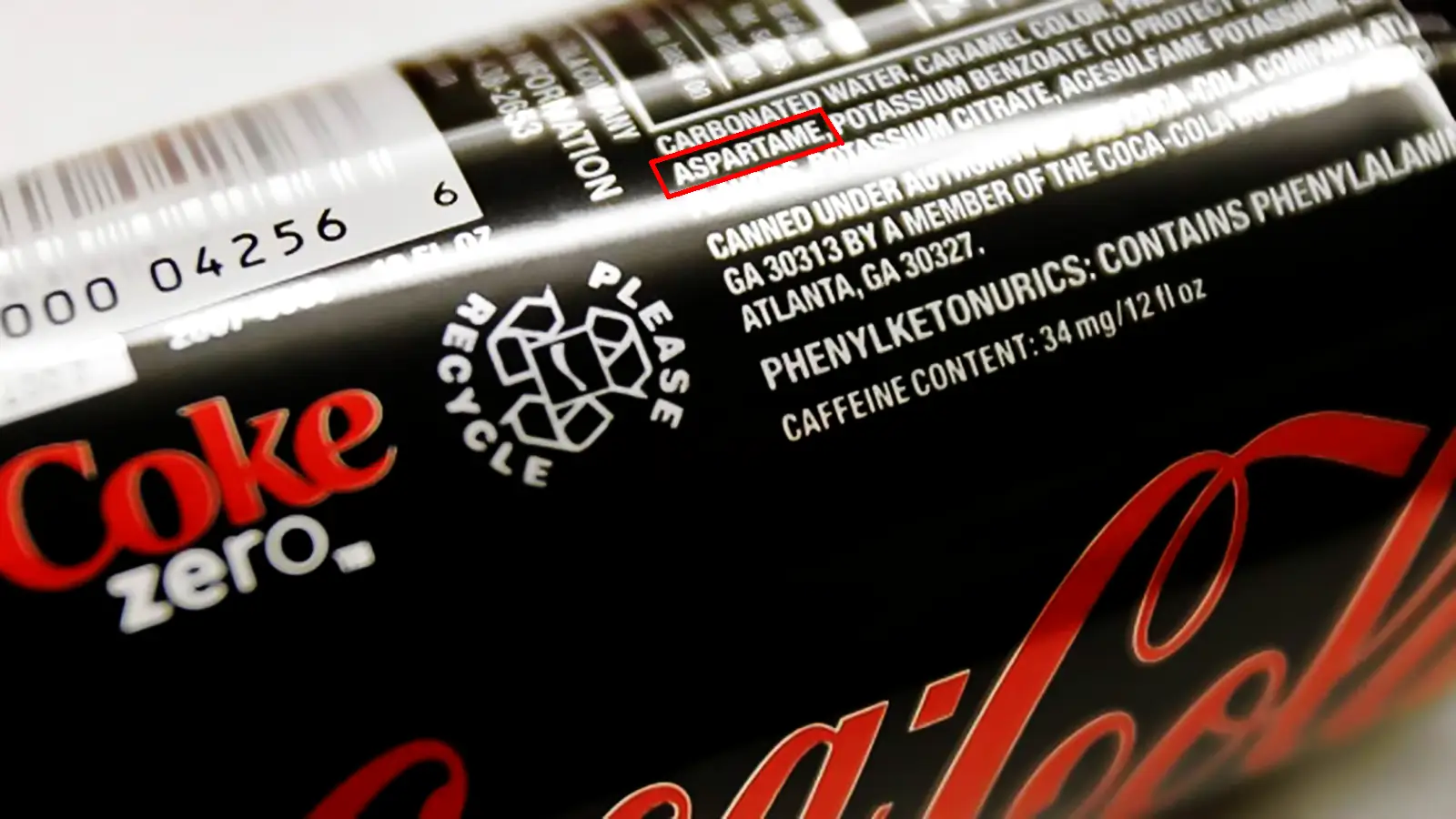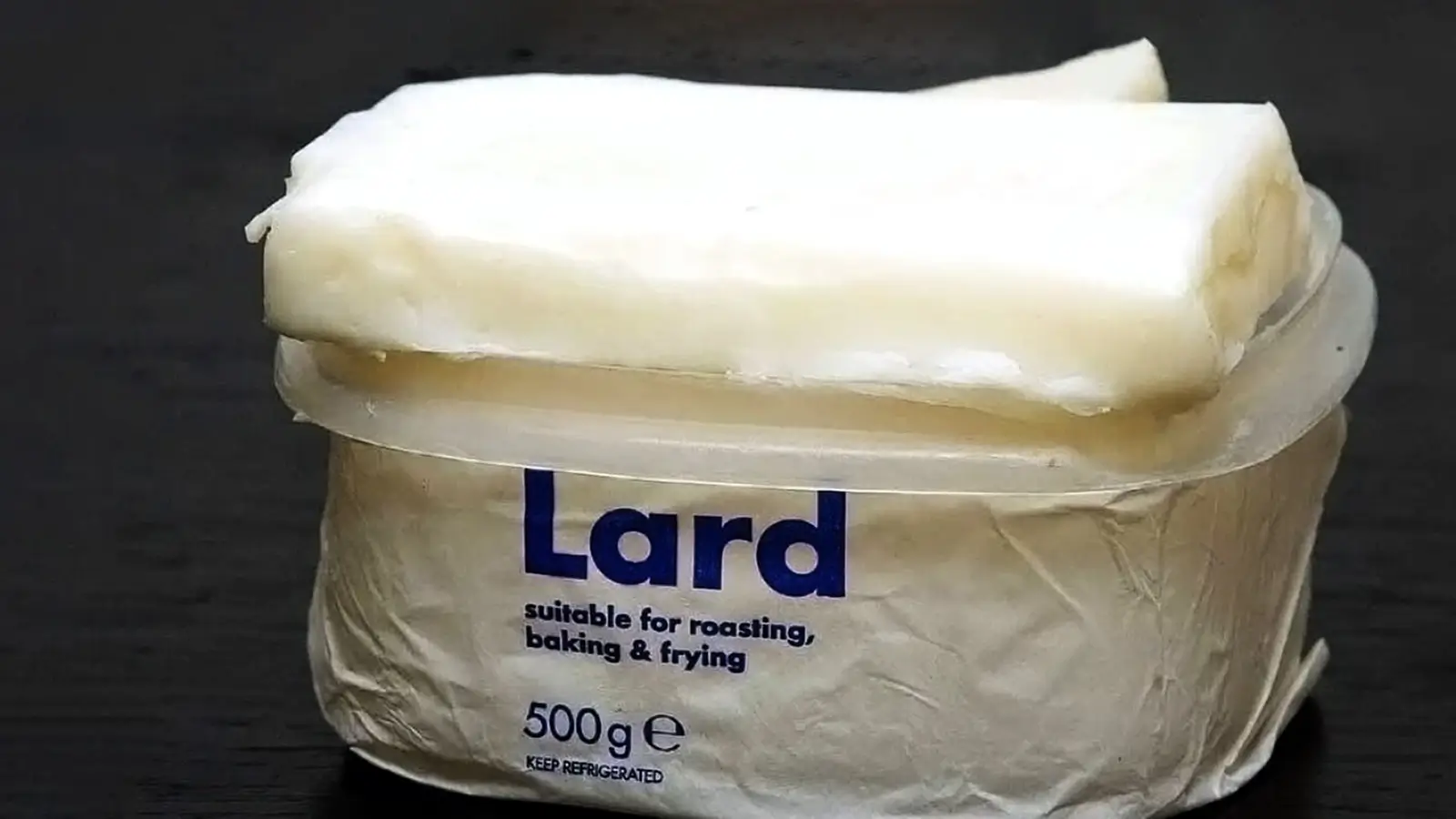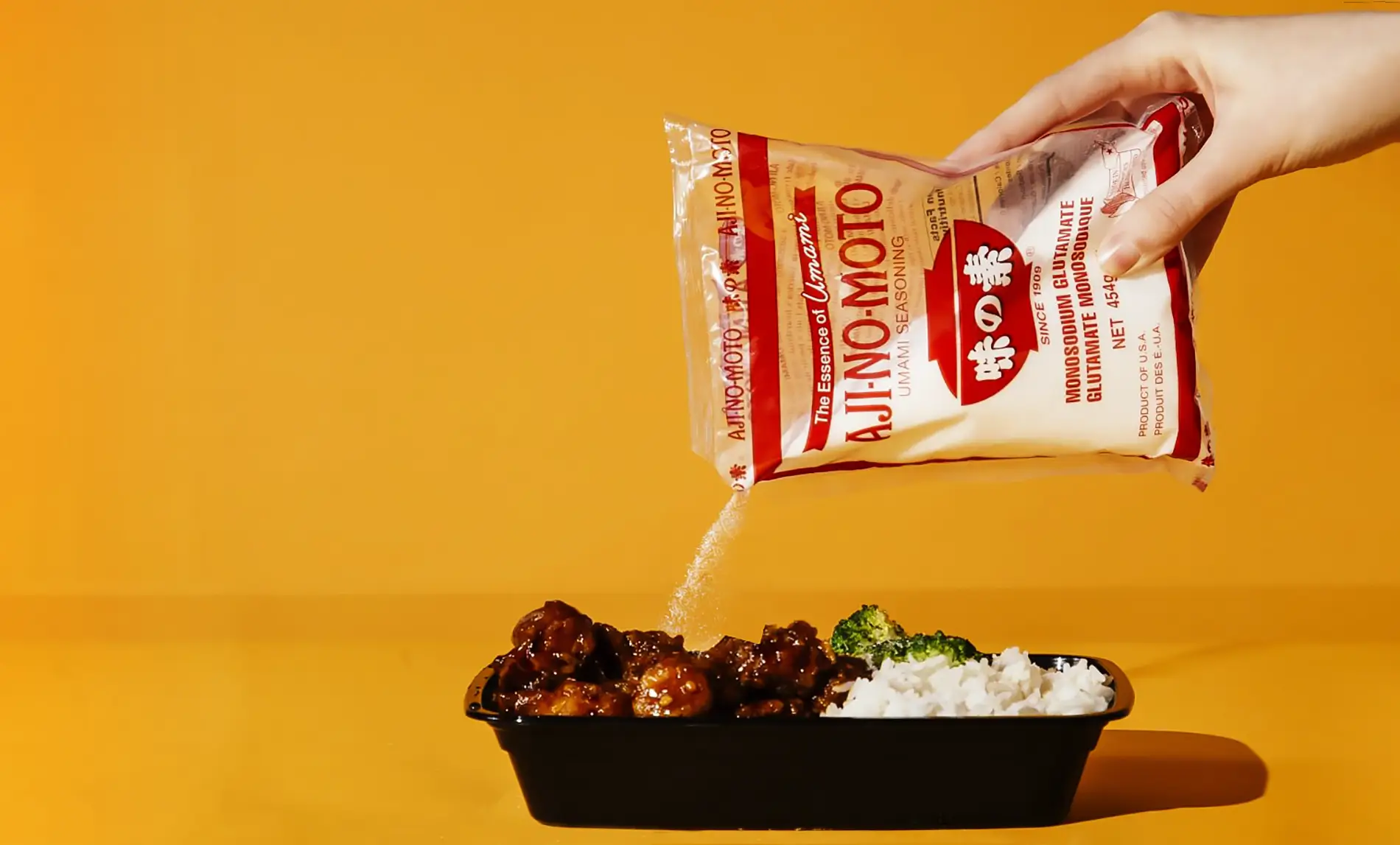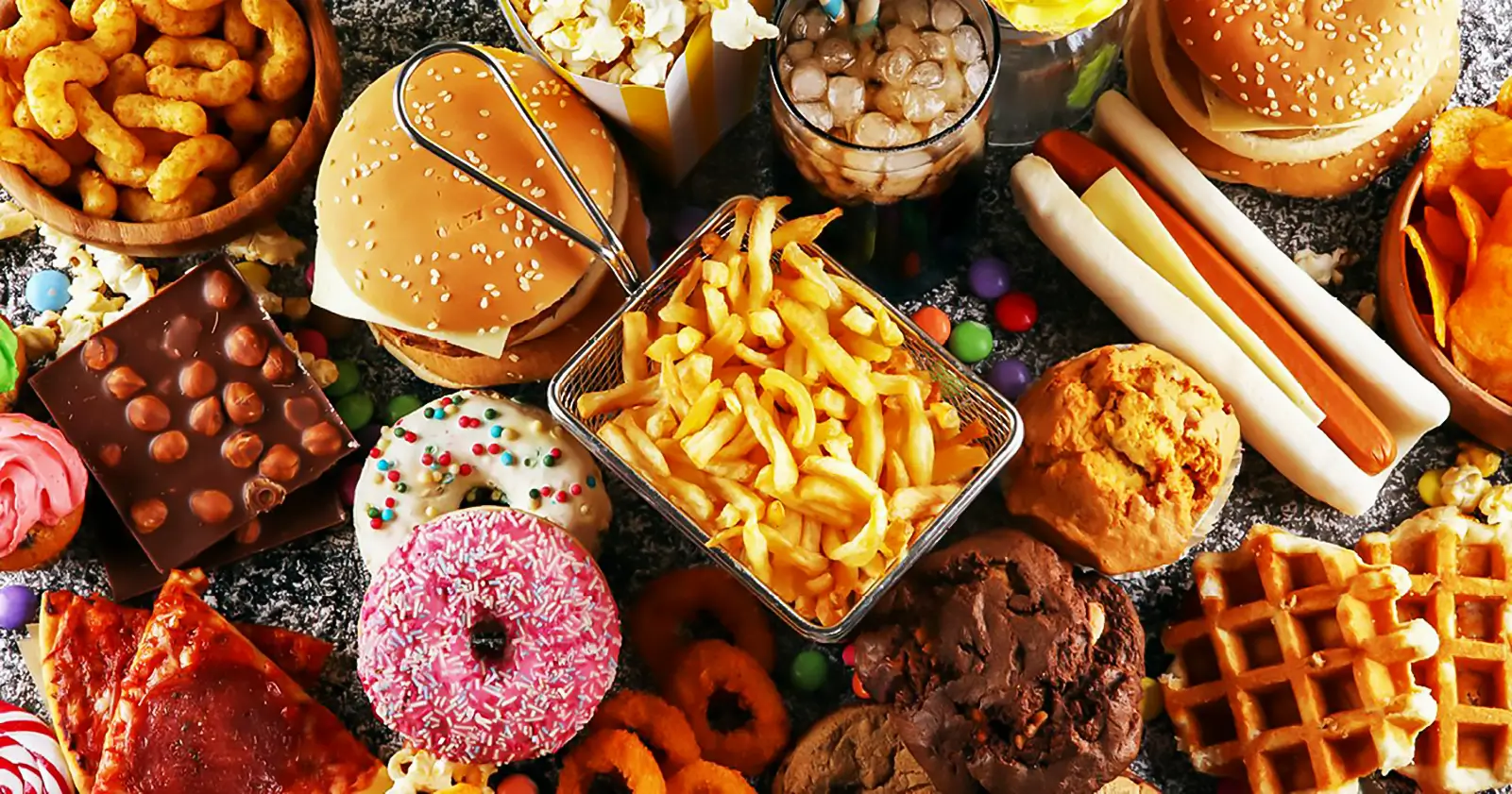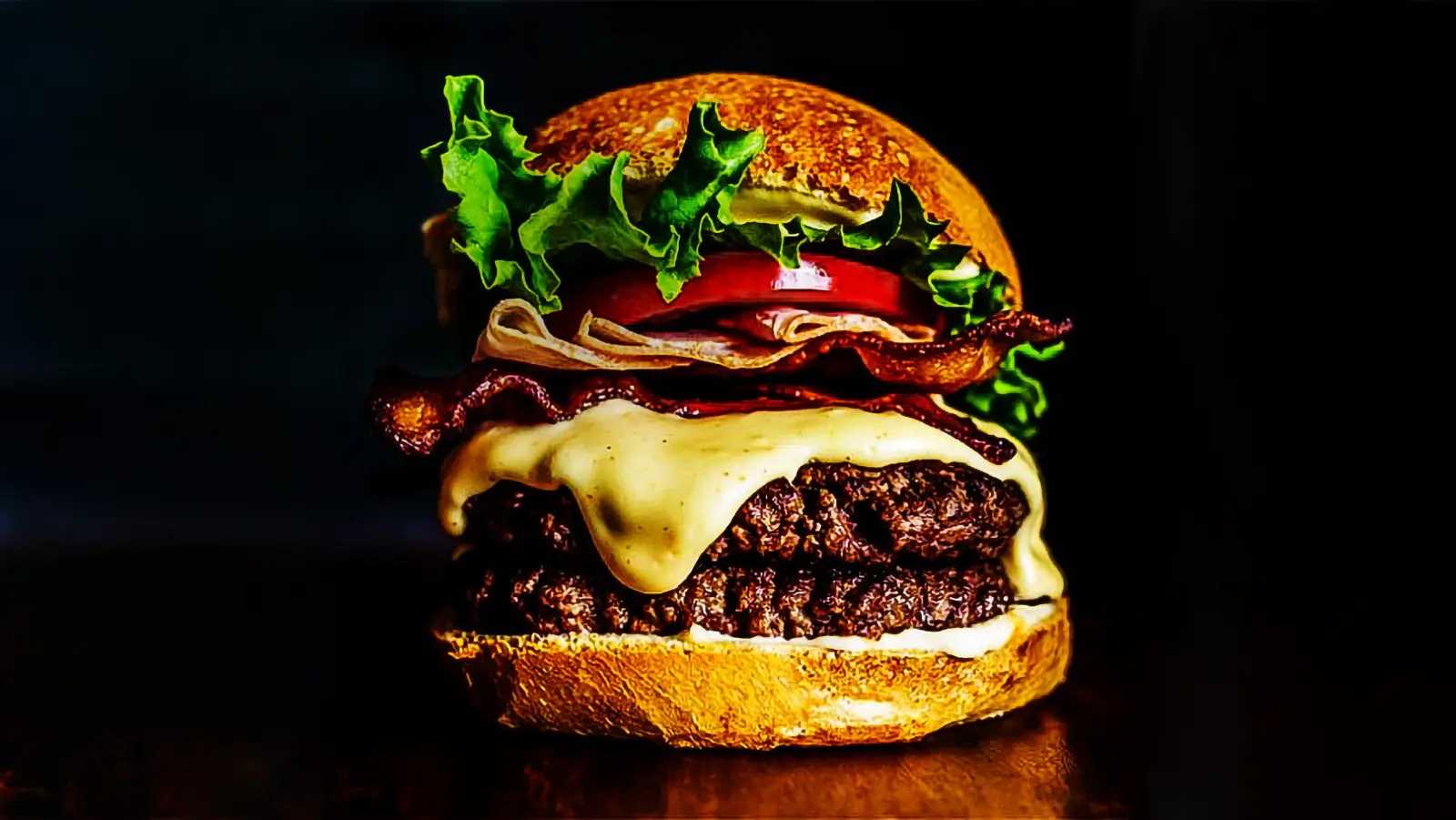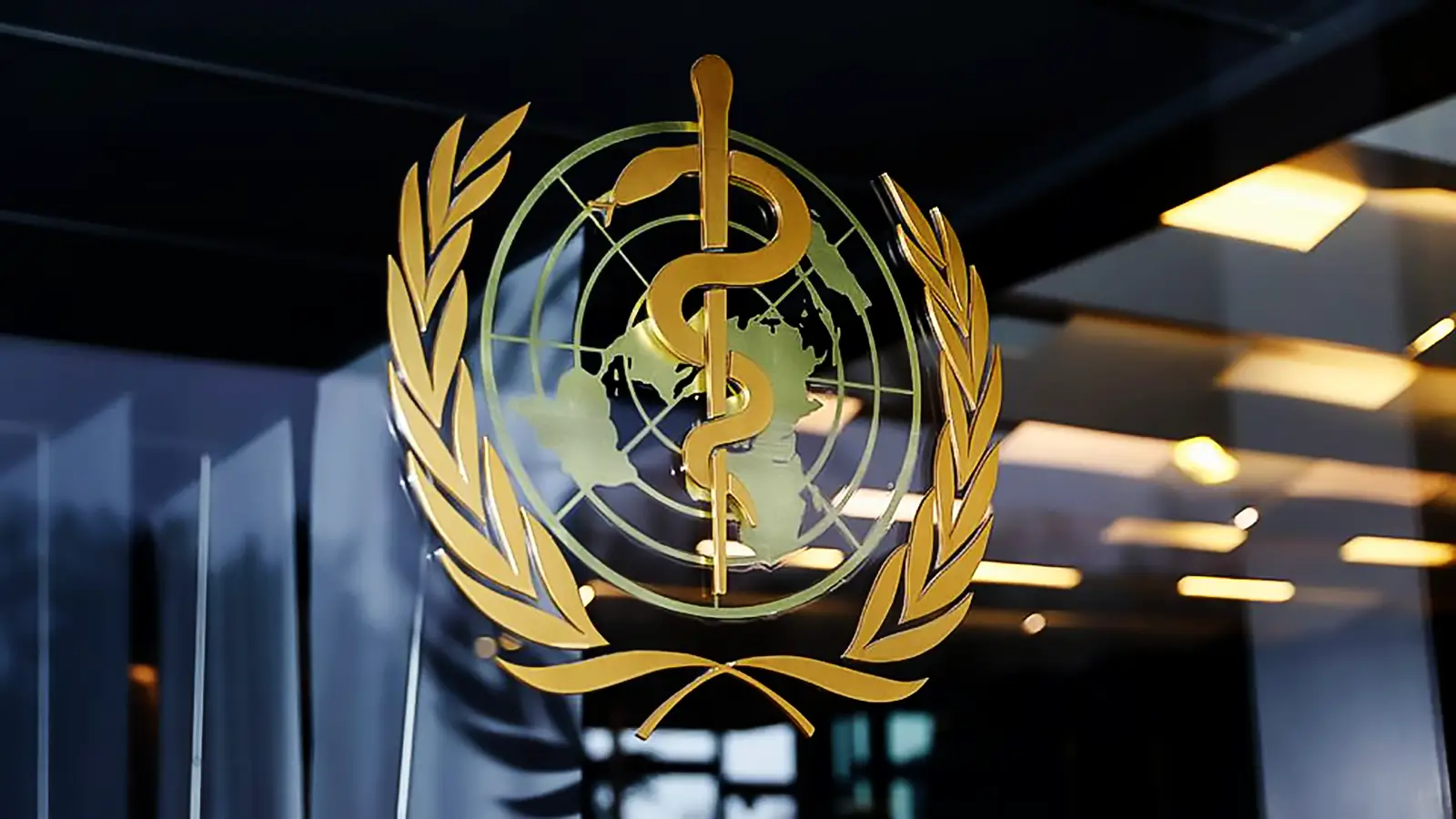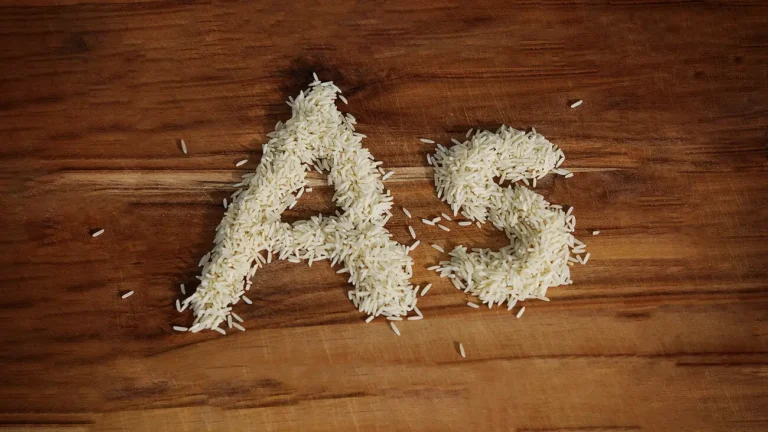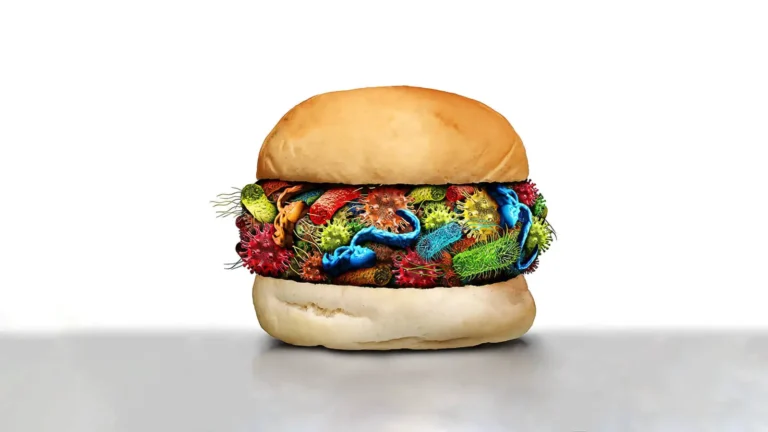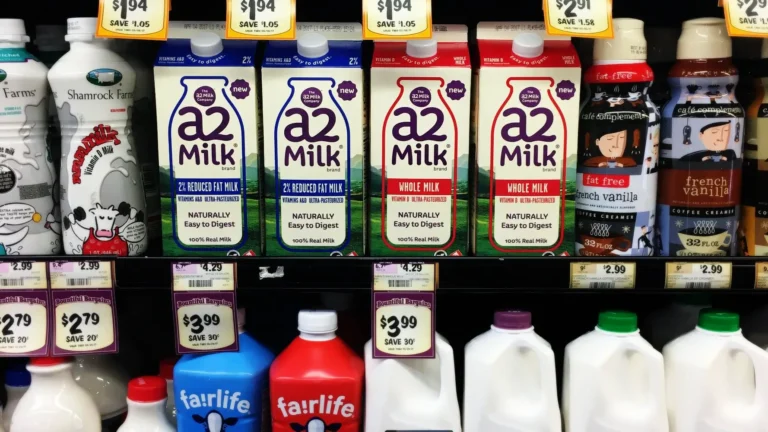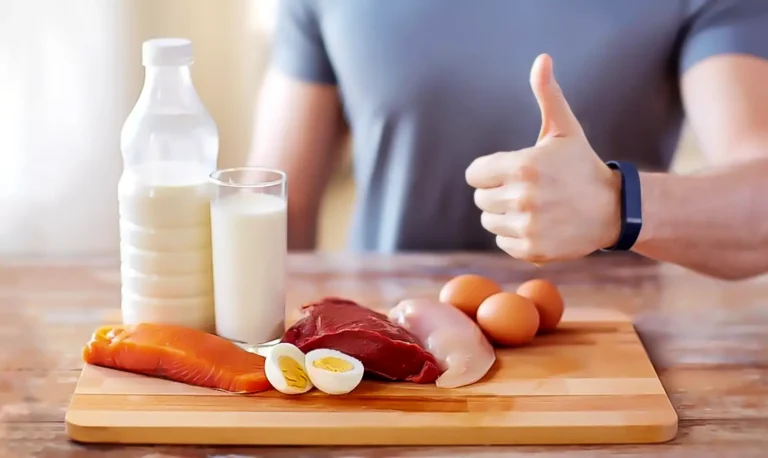Diabetes causes and refined carbohydrates- The vegan argument
People believe that refined carbohydrates are associated with insulin spikes and are one of the diabetes causes. They are right. However, they are also wrong.
Milos Pokimica
Written By: Milos Pokimica
Medically Reviewed by: Dr. Xiùying Wáng, M.D.
Updated June 9, 2023Most people have a belief that refined carbs like white rice are terrible and that refined carbohydrates are associated with insulin spikes and are one of the diabetes causes. They are right.
However, they are wrong at the same time. We will have to look at the entire picture of refined carbohydrates and diabetes.
When rice or grain is refined, the bran is removed. Consumers like nice and soft bread or rice without fiber that can stick between our teeth and taste bad. However, because fiber slows down digestion and absorbs water the carbs in rice without it gets absorbed more rapidly and create an unnatural insulin spike causing an unnatural reaction in our body which by compensation adapts by downregulation of insulin receptors. That is causing insulin resistance and is one of many factors that people with diabetes have to cut out of their diet.
Another factor is intercellular fat which blocks insulin receptor signaling. So refined carbs and sugars cause fast digestion of large and unnatural quantities of calories. Because we have absorption of sugar at a fast rate, we do not burn all of the calories because there are too many in the bloodstream, and some will end up stored as fat. What is worse, as soon as digestion is over, and all the sugars are out of the blood we will start to feel hungry again. Thus lack of fiber is correlated with constant binge eating which then causes obesity and insulin receptors downregulation. Then obesity independently causes all the bad stuff I already wrote about before, and the loop is finished. One small intervention like I do not like sticking bran in my teeth can cause a cascade of effects. A big chunk of the medical community finds that carbs are the cause of all evil and all diseases that we have today. This is the basis of reasoning for diets like the Paleo and Atkins diet. There is no bad logic here. So far.
The industry can sell protein powders and supplements and all the meat they can, especially if the meat is lean. Good old chicken breast and maybe some with healthy fats like tuna. Many people with diabetes that start to adopt this kind of diet may worsen their condition. For example, the modern diabetes epidemic in China and Japan has been linked to white rice consumption which is another half-truth. Consequently, that is why The China Study irritates people.
Rice currently feeds almost half of the world population but how can we settle much lower diabetes rates than just a few decades ago when they ate even more rice? In this study for example (Hu et al., 2012) higher consumption of white rice was correlated with a significantly heightened chance of type 2 diabetes, particularly in Asian (Chinese and Japanese) populations. Also, this is not a small study, with 352,384 participants with follow-up periods ranging from 4 to 22 years. If we analyze this statistically by total population numbers, the dose-response meta-analysis showed that for every meal per day addition of white rice intake, the relative risk of type 2 diabetes was 1.11 meaning an 11% increase in risk. Today China has the same diabetes rate of around 10% as the US which has around 11% despite the seven times less obesity. White rice does not appear to be correlated with obesity and heart attacks and strokes, just diabetes.
However, again if we look at The China Study rural plant-based diets centered around rice were associated with a low risk of diabetes and cancer, and heart disease. This 10% of diabetes prevalence just happened. In the year 2000, China had one of the lowest diabetes rates in the world. This is a dramatic shift that happened in just 20 years.
So what happened?
Well, the same thing happens in every country when the standard of living goes up. Meat consumption went up by an astonishing 40 percent, and rice consumption went down by 30 percent. And now we have a problem. If meat consumption goes up, rice consumption goes down, and diabetes risk goes up, and at the same time, rice consumption independently is correlated with diabetes risk, what is going on? Is it just rice?
Should we eat a more paleo type of diet and cut all the rice? That is what they tell us. Refined carbohydrates are correlated with diabetes and obesity. The answer is simple. What happens is that animal protein is making the rice much worse. This is one study you should go and read (Gulliford et al., 1989). The date of publication was Oct 1989.
Real “new” medical breakthrough. Six noninsulin-dependent diabetic subjects had received meals containing 25 g carbohydrates either as potato or as spaghetti. That is the same meal as white rice. Pure white flour pasta and starch-rich low fiber potato. Then insulin response was measured, and the meals were duplicated including the bonus of 25 g of protein and another one including 25 g of fat. The level of sugar in the blood and insulin responses were measured for 4h after the test meal. The addition of protein increased insulin responses dramatically. This is a “cutting-edge” science to give someone sugar and protein and measure the insulin response.
So there it is. The answer. It is the holy grail of nutrition.
The Protein.
If we look at the chart, we would see that the addition of protein makes potatoes exactly two times worse. From 150 to 300.
We can do it with sugar water too. From 50 to 100. The more meat we add, the worse it gets. When we get to 50 g of protein, we will elicit a surge of insulin that is seriously unnatural and disease-causing. Animal protein significantly potentiates insulin secretion triggered by carbohydrate ingestion. And all along we had been told that diabetes causes are white rice and white flour and sugar. And that is correct partially. The real truth is more complicated. Diabetes causes prime factor is maladaptation to our new diet.
Fiber will lower insulin response like whole wheat pasta but not at the level of 100 percent. Adding meat to any starch is problematic. This combination is unnatural. It is much worse, almost two times worse for insulin response to eat roasted chicken breast with whole wheat bread than the same portion of regular white flour-like Pomodoro pasta with or without oil.
Think about it this way. Does any other animal have regular lunch that consists of different food items?
Carnivores eat only meat. Plant eaters eat only plants. What about omnivores? Do we think that bear is going to catch a fish and then don’t eat it for some period until there is lunchtime so that he can bring that fish to the beehive in order to have dessert afterward?
Even combining different food items at the same meal is 100% unnatural and a modern human invention. And this surge of insulin is maladaptation.
I would ask this. Can we eat just meat without bread? Would we enjoy greasy sausages just by themselves? Would we enjoy just meat from burgers without the buns? It is a mixture of fat and carbohydrates (sugar) that abnormally triggers dopamine signaling in our brains and many other things like in this case abnormal insulin reaction. Combining this with low fiber intake is a recipe for disaster. Combining different food items is not a natural form of eating, but it is pleasurable so we will have to deal with it in the best way we can.
Type 2 diabetes is treatable to some extent. It is actually pretty simple. If we count out the exercise and losing weight number one would be no animal protein. Number two would be fiber. Meaning a lot of it in every meal. If you have to eat meat and have no other choice, then go ahead and eat meat. Just meat. No bread, rice, or any sugar with it. Sugar means regular sugar or fructose or carbs in any form. No salads no nothing. Maybe some cheese. No milk. Milk has sugar or lactose in it.
If you have to eat a combination of sugars and proteins, then it would be a good idea to add some psyllium husk or regular wheat bran and eat spoons of it after a meal. That will slow down digestion to some degree. Psyllium husk has no calories; it is 100 percent fiber. We can use it for diets if we want to bulk up meals in the stomach to give us more saturation but it tastes like cardboard that is liquid.
Number three would be resistant starch meaning beans. If we eat sausages with lots of bread and lots of alcohol we are probably done deal if we have diabetes in the family. When we see the numbers that 1 in 10 people have diabetes, it is an understatement. The actual number is 1 in 3 people in developed countries; just they might not know it because they do not have visible symptoms and insulin resistance is in the range that is known as pre-diabetes. Pre-diabetes is a disease just by itself and would also cause in the long run some adverse effects. It escalates to full-blown diabetes in 1 in 10 cases. CDC estimates that these numbers will still grow primarily on a global scale as the industrialization of the undeveloped regions of the world is taking place. If you have pre-diabetes, the long-term damage, especially to your heart, blood vessels, and kidneys, may already be starting.
References:
- Hu, E. A., Pan, A., Malik, V., & Sun, Q. (2012). White rice consumption and risk of type 2 diabetes: meta-analysis and systematic review. BMJ (Clinical research ed.), 344, e1454. https://doi.org/10.1136/bmj.e1454
- Gulliford, M. C., Bicknell, E. J., & Scarpello, J. H. (1989). Differential effect of protein and fat ingestion on blood glucose responses to high- and low-glycemic-index carbohydrates in noninsulin-dependent diabetic subjects. The American journal of clinical nutrition, 50(4), 773–777. https://doi.org/10.1093/ajcn/50.4.773
Related Posts
Do you have any questions about nutrition and health?
I would love to hear from you and answer them in my next post. I appreciate your input and opinion and I look forward to hearing from you soon. I also invite you to follow us on Facebook, Instagram, and Pinterest for more diet, nutrition, and health content. You can leave a comment there and connect with other health enthusiasts, share your tips and experiences, and get support and encouragement from our team and community.
I hope that this post was informative and enjoyable for you and that you are prepared to apply the insights you learned. If you found this post helpful, please share it with your friends and family who might also benefit from it. You never know who might need some guidance and support on their health journey.
– You Might Also Like –

Learn About Nutrition
Milos Pokimica is a doctor of natural medicine, clinical nutritionist, medical health and nutrition writer, and nutritional science advisor. Author of the book series Go Vegan? Review of Science, he also operates the natural health website GoVeganWay.com
Medical Disclaimer
GoVeganWay.com brings you reviews of the latest nutrition and health-related research. The information provided represents the personal opinion of the author and is not intended nor implied to be a substitute for professional medical advice, diagnosis, or treatment. The information provided is for informational purposes only and is not intended to serve as a substitute for the consultation, diagnosis, and/or medical treatment of a qualified physician or healthcare provider.NEVER DISREGARD PROFESSIONAL MEDICAL ADVICE OR DELAY SEEKING MEDICAL TREATMENT BECAUSE OF SOMETHING YOU HAVE READ ON OR ACCESSED THROUGH GoVeganWay.com
NEVER APPLY ANY LIFESTYLE CHANGES OR ANY CHANGES AT ALL AS A CONSEQUENCE OF SOMETHING YOU HAVE READ IN GoVeganWay.com BEFORE CONSULTING LICENCED MEDICAL PRACTITIONER.
In the event of a medical emergency, call a doctor or 911 immediately. GoVeganWay.com does not recommend or endorse any specific groups, organizations, tests, physicians, products, procedures, opinions, or other information that may be mentioned inside.
Editor Picks –
Milos Pokimica is a doctor of natural medicine, clinical nutritionist, medical health and nutrition writer, and nutritional science advisor. Author of the book series Go Vegan? Review of Science, he also operates the natural health website GoVeganWay.com
Latest Articles –
Plant Based News
-
‘I Tried A Vegan Afternoon Afternoon Tea In London – Here’s What It Was Like’
on June 27, 2025
-
Easy Red Lentil Dhal
on June 27, 2025
-
Roasted Aubergine Salad
on June 26, 2025
-
Cardamom Pistachio Ice Cream (Dairy-Free And Vegan)
on June 26, 2025
-
Better Nature Expands ‘Supercharged Protein’ Range With Mediterranean Tempeh
on June 26, 2025
-
This DIY Protein Powder Is The Upgrade Your Smoothie Needs
on June 26, 2025
-
One-Pot Curry In A Hurry
on June 26, 2025
Top Health News — ScienceDaily
- Acid-busting diet triggers 13-pound weight loss in just 16 weekson June 26, 2025
Swap steaks for spinach and you might watch the scale plummet. In a 16-week crossover study, overweight adults who ditched animal products for a low-fat vegan menu saw their bodies become less acidic and dropped an average of 13 pounds—while the Mediterranean diet left weight unchanged. Researchers link the shift to lower “dietary acid load,” a hidden inflammation trigger driven by meat, eggs, and cheese.
- Hot tubs outperform saunas in boosting blood flow and immune poweron June 26, 2025
Hot tubs don’t just feel great, they may actually outperform saunas when it comes to health perks. A study found that soaking in hot water raises core body temperature more than dry or infrared saunas, triggering stronger heart, blood vessel, and immune responses.
- Scientists reveal your morning coffee flips an ancient longevity switchon June 26, 2025
Caffeine appears to do more than perk you up—it activates AMPK, a key cellular fuel sensor that helps cells cope with stress and energy shortages. This could explain why coffee is linked to better health and longer life.
- Scientists warn of bat virus just one mutation from infecting humanson June 25, 2025
Viruses closely related to the deadly MERS coronavirus are lurking in bats and one group, known as HKU5, may be just one mutation away from making the jump to humans. A new study reveals how these viruses bind to cell receptors and even shows signs of adapting to human-compatible versions of those receptors.
- The brain’s sweet spot: How criticality could unlock learning, memory—and prevent Alzheimer’son June 25, 2025
Our brains may work best when teetering on the edge of chaos. A new theory suggests that criticality a sweet spot between order and randomness is the secret to learning, memory, and adaptability. When brains drift from this state, diseases like Alzheimer s can take hold. Detecting and restoring criticality could transform diagnosis and treatment.
- Vitamin C flips your skin’s “youth genes,” reversing age-related thinningon June 25, 2025
Japanese researchers have found that vitamin C can thicken skin by switching on genes that boost skin cell growth, helping reverse age-related thinning. It works by reactivating DNA through a process that lets cells regenerate more effectively—potentially a game-changer for aging skin.
- Inside the tumor: AI cracks five hidden cell types to stop cancer’s comebackon June 25, 2025
A new AI tool, AAnet, has discovered five distinct cell types within tumors, offering a deeper look into cancer’s inner diversity. This insight could transform how we treat cancer, enabling more personalized therapies that tackle every type of cell in a tumor.
PubMed, #vegan-diet –
- Micronutrient intake and nutritional status in 16-to-24-year-olds adhering to vegan, lacto-ovo-vegetarian, pescatarian or omnivorous diets in Swedenon June 26, 2025
CONCLUSION: Youth, regardless of dietary practice, need support to ensure adequate micronutrient intakes, particularly for vitamin D and selenium. Further research is required to evaluate iodine nutrition in Swedish youth.
- Dietary Patterns and Sustainable Lifestyles: A Multicenter Study from Latin America and Spainon June 26, 2025
Food systems interact through multiple dimensions including food security, nutrition, and planetary health. This study aims to associate different dietary patterns with sustainable lifestyles in Latin America and Spain. This was an observational, analytical, multicenter, cross-sectional survey study, with a total of 6412 participants. A self-administered questionnaire was developed in an online format in the Google Docs interface. The questionnaire was divided into sections: (1) […]
- Integrating comparative genomics and risk classification by assessing virulence, antimicrobial resistance, and plasmid spread in microbial communities with gSpreadCompon June 26, 2025
CONCLUSIONS: The gSpreadComp workflow aims to facilitate hypothesis generation for targeted experimental validations by the identification of concerning resistant hotspots in complex microbial datasets. Our study raises attention to a more thorough study of the critical role of diet in microbial community dynamics and the spread of AMR. This research underscores the importance of integrating genomic data into public health strategies to combat AMR. The gSpreadComp workflow is available at…
- Validation and adaptation of a Turkish version of the dietarian identity questionnaireon June 25, 2025
Dietarian identity reflects an individual’s cognitive, emotional, and behavioral orientation toward the consumption or avoidance of animal-based foods, including red meat, poultry, fish, eggs, and dairy. This study aimed to adapt and validate the Dietarian Identity Questionnaire (DIQ) for Turkish-speaking populations by establishing its cultural and linguistic suitability and examining dietarian identity profiles among different dietary patterns. The DIQ was adapted into Turkish and […]
- Planting Rights and Feeding Freedom: Navigating the Right to a Vegan Diet in Hospitals and Prisonson June 20, 2025
The legal recognition of veganism highlights the evolving landscape of dietary choices and their status under human rights law. This paper examines the legal status of vegan diets under the European Convention on Human Rights (ECHR), focusing on public institutions such as prisons and hospitals. By analyzing the first relevant cases before the European Court of Human Rights, it explores the protection of vegan diets under Articles 9 (freedom of thought, conscience, and religion) and 14…
Random Posts –
Featured Posts –

Latest from PubMed, #plant-based diet –
- Comparing Dietary Intake and Cardiovascular Risk Factors in Vancouver’s South Asian Communityby Rehan Jessa on June 27, 2025
Background: Compared to omnivorous diets, vegetarian diets are generally linked to improved body weight, blood pressure, lipid profiles, and glycemic control. Despite having the highest global prevalence of vegetarianism, South Asians in Canada exhibit disproportionately high rates of cardiovascular disease (CVD) and diabetes. This study examines the usual dietary intake and CVD risk factors among South Asian vegetarians and omnivores at risk of diabetes in British Columbia, Canada. Methods: […]
- Why Do Adolescents Skip Breakfast? A Study on the Mediterranean Diet and Risk Factorsby Cristina Romero-Blanco on June 27, 2025
Background/Objectives: Skipping breakfast is increasingly common among adolescents and has been associated with adverse health and academic outcomes. The average prevalence of breakfast skipping among adolescents is around 16%, although worldwide, it varies greatly across studies, ranging from 1.3 to 74.7%. This study aimed to assess the frequency of daily breakfast consumption and explore the factors associated with its omission in a stratified sample of Spanish adolescents. Methods: A…
- A Nationwide Survey of Italian University Students: Exploring the Influences of Sustainable Dietary Behaviors, Lifestyle, and Sociodemographic Factors on Adherence to the Mediterranean Dietby Cinzia Franchini on June 27, 2025
CONCLUSIONS: Future actions are crucial to create a food environment that facilitates healthy and sustainable dietary choices among young adults, such as improving the nutritional quality of processed products and regulating their promotion, as well as implementing initiatives to improve university food services and encourage the use of campus dining facilities.
- Dietary Assessment of Older Korean Adults by Level of Plant Protein Intakeby Yong-Seok Kwon on June 27, 2025
CONCLUSIONS: Based on these findings, dietary education or guidelines are needed to increase individual awareness, as well as the development of dietary content at government level to support this.
- Adherence to Mediterranean Diet and Implications for Cardiovascular Risk Preventionby Giulia Frank on June 27, 2025
Background/Objectives:Arterial hypertension, increased carotid intima-media thickness (cIMT), and arterial stiffness (AS) are recognized predictors of cardiovascular disease (CVD). Emerging evidence suggests that vascular remodeling may precede the full development of hypertension. Furthermore, body mass index (BMI), fat mass percentage (FM%), and visceral adipose tissue (VAT), are significant risk factors for cardiovascular events. Conversely, adherence to the Mediterranean diet is […]
- Fermented Fruits, Vegetables, and Legumes in Metabolic Syndrome: From Traditional Use to Functional Foods and Medical Applicationsby Karolina Bernacka on June 27, 2025
Fermentation has been used for centuries to preserve food and to obtain products with new, attractive sensory characteristics. Fermented products are a source of dietary fiber, vitamins, bioactive compounds, and probiotic bacteria with health-promoting properties. This review provides a comprehensive overview of the effects of fermented fruits, vegetables, and legumes on metabolic disturbances characterizing metabolic syndrome (MetS). Furthermore, the chemical composition, microbial […]
